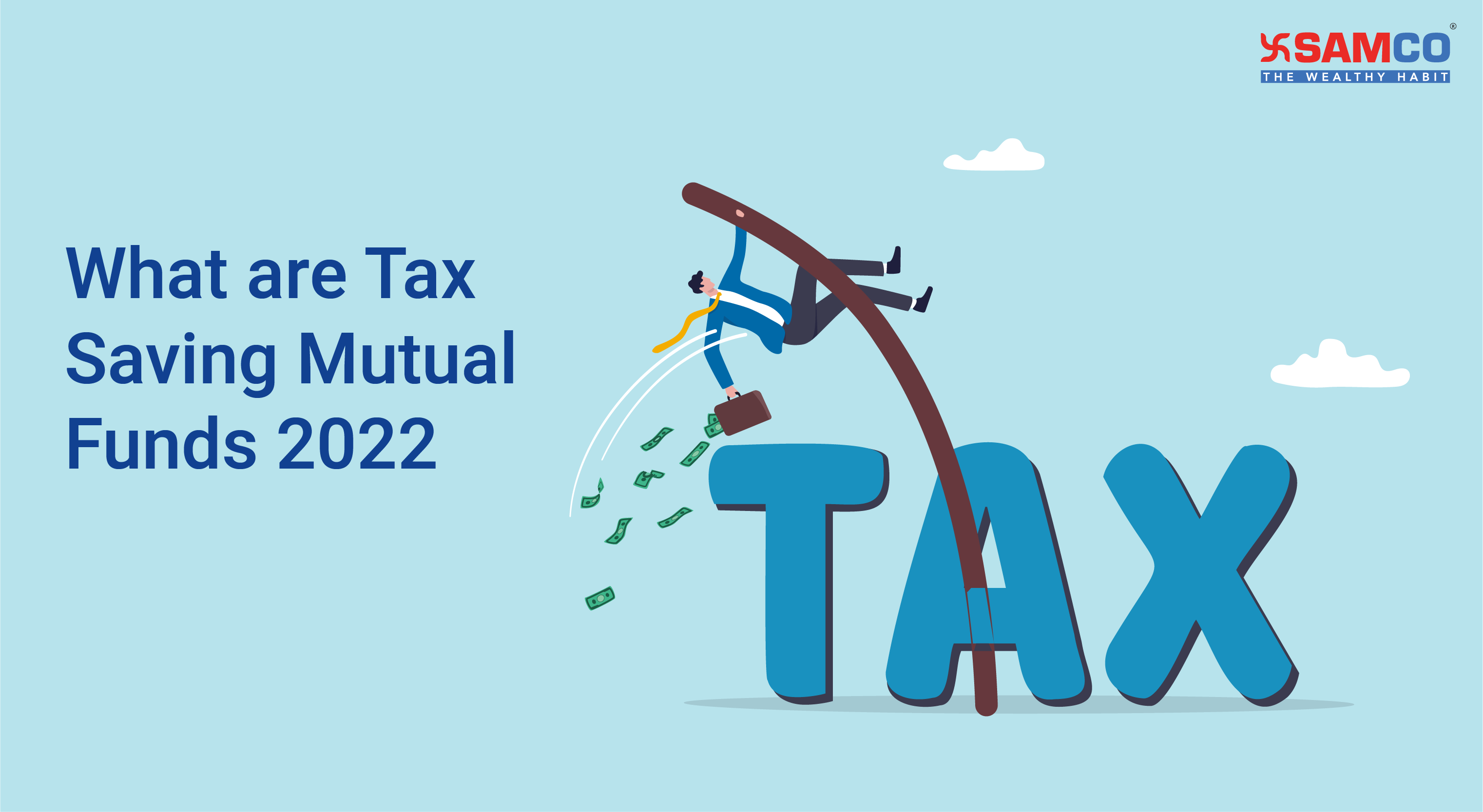 There are hundreds of mutual funds available in the Indian securities markets. Out of these, ELSS, popularly known as Tax saving mutual funds is the center of attraction among Indian retail investors.
With the rising popularity of these tax saving mutual funds, retail investors have started moving away from traditional tax saving mutual funds like 5-year Bank FD, PPF, NSC etc.
But before you invest your hard-earned money in these tax saving mutual funds, it is necessary for you to have a clear understanding on how these tax saving mutual funds work.
There are hundreds of mutual funds available in the Indian securities markets. Out of these, ELSS, popularly known as Tax saving mutual funds is the center of attraction among Indian retail investors.
With the rising popularity of these tax saving mutual funds, retail investors have started moving away from traditional tax saving mutual funds like 5-year Bank FD, PPF, NSC etc.
But before you invest your hard-earned money in these tax saving mutual funds, it is necessary for you to have a clear understanding on how these tax saving mutual funds work.
Before we going to know about tax saving funds, let us understand what are mutual funds: In this article, we will cover,
- What are Tax Saving Mutual Funds / ELSS?
- Advantages & Disadvantages of ELSS
- How to evaluate any ELSS funds?
- Options for investing in ELSS category
- Top performing ELSS funds

What are Tax saving mutual funds / ELSS?
ELSS stands for Equity Linked Saving Scheme where investors get tax exemption under section 80C of the Income Tax Act of 1961. By investing in ELSS, you can claim a maximum tax exemption of Rs 150,000. Here are a few points that you should consider before investing in ELSS.- ELSS has a lock-in period of 3 years.
- ELSS is an equity-oriented mutual fund i.e. they invest in stocks, hence they carry high risk.
- You can invest in ELSS via lumpsum or SIP i.e. monthly installments.
What are the Advantages & Disadvantages of ELSS:
Investing in ELSS has the following advantages:- ELSS has the shortest lock-in period among all other tax saving mutual funds. ELSS is locked-in for only 3 years whereas a tax saving Bank FD has a lock-in period of 5 years.
- Long term capital gains in ELSS are taxed at 10% only above Rs 1 Lakhs.
- There is no cap on maximum investment in ELSS.
- ELSS is managed by experienced and qualified fund managers, eliminating the need to pay attention to minute by minute price movements like in stocks.
- ELSS is comparatively risky when compared to other tax saving Mutual funds like PPF, NPS etc.
- Data suggests that ELSS has given good returns only when it is held for more than 5 years. This actually makes people remain invested for a long period virtually blocking the cash
How to evaluate ELSS funds for investment?
Investors should look at the following parameters while selecting tax saving mutual funds.- Returns: Investors need to analyse the past performance of the fund against its benchmark and peers. To get the correct picture, analyse these tax saving mutual funds as per their 5-year performance.
- Fund History: Look at the past performance of the fund for at least 5-10 years.
- Expense ratio: The expense ratio highlights the money required to manage the expenses of the fund. Lower expense ratio helps investors make better returns. Therefore investors need to select a fund with a lower expense ratio.
- Financial Parameters: While evaluating tax saving mutual funds, you should also look at the following parameters: Standard Deviation, Sharpe ratio, Sortino ratio, Alpha and Beta. Higher standard deviation & beta tends to make funds riskier. Higher Sharpe ratio of a fund tends to give a higher return.
Which option to select while investing in ELSS?
- Growth Option: In case of growth option, investors don’t get dividends, rather dividends are further reinvested in the fund. This enhances the NAV of the fund. Such funds usually have the capacity to generate long term capital appreciation for investors.
- Dividend Option: In this option, investors receive dividends. But after dividends are distributed, the NAV of the scheme gets re-adjusted.
- Dividend reinvestment option: In this option, usually dividend is paid out to investors and investors have the option of reinvesting the dividend back to the fund for capital appreciation.
Top Performing ELSS funds:
List of Top 10 ELSS Fund with other critical details:
Axis Long Term Equity Fund: Axis long-term equity fund is managed by Axis Mutual Fund and it’s one of the largest assets under management. The fund invests in companies which can grow well in the time frame 3-5 years.
Fund Strategy: The fund invests in large-cap companies which have the potential to grow in the next 3-5 years.| Inception: | 29th December 2009 |
| Net Asset: | 18,262 Cr. Rs. |
| Type: | Open Ended |
| Exit Load: | 0 |
| Expense Ratio: | 2.26% |
| Benchmark: | S&P BSE 200 TRI |
| Performance | |
| 1 Year Return: | 18.69% |
| 3 Year Return: | 12.96% |
| 5 Year Return: | 27.34% |
Franklin India Taxshield: Franklin India Taxshield is one of the best ELSS available in the market. The fund performed well since its inception growing at a CAGR of 24%
Fund Strategy: The fund invests in large-cap companies which have the potential to grow and has an attractive valuation.| Inception: | 10th April 1999 |
| Net Asset: | 3,623 Cr. Rs. |
| Type: | Open Ended |
| Exit Load: | 0 |
| Expense Ratio: | 2.08% |
| Benchmark: | NIFTY 500 TRI |
| Performance | |
| 1 Year Return: | 9.03% |
| 3 Year Return: | 9.52% |
| 5 Year Return: | 21.90% |
DSP BlackRock Tax Saver Fund: DSP BlackRock Tax Saver Fund has generated a 13.87% CAGR since inception.The fund focuses on large cap companies.
Fund Strategy: The fund has a bottom-up investment approach, with a strong focus on investment in good companies with an attractive valuation.| Inception: | 18th January 2007 |
| Net Asset: | 4,218 Cr. Rs. |
| Type: | Open Ended |
| Exit Load: | 0 |
| Expense Ratio: | 2.10% |
| Benchmark: | NIFTY 500 TRI |
| Performance | |
| 1 Year Return: | 7.92% |
| 3 Year Return: | 12.90% |
| 5 Year Return: | 23.82% |
Reliance Tax Saver Fund: Reliance Tax Saver Fund has generated CAGR of 14% since inception. The fund has a focus on mid-cap and small-cap companies.
Fund Strategy: The fund has a focus on small & mid-cap companies with good value and growth.| Inception: | 21st September 2001 |
| Net Asset: | 10083 Cr. Rs. |
| Type: | Open Ended |
| Exit Load: | 0 |
| Expense Ratio: | 1.98% |
| Benchmark: | S&P BSE 200 TRI |
| Performance | |
| 1 Year Return: | -4.34% |
| 3 Year Return: | 7.01% |
| 5 Year Return: | 24.82% |
ICICI Prudential Long Term Equity Fund: ICICI Prudential Long Term Fund has generated CAGR of 21% since inception. The fund has a focus on investing value attractive companies with growth potential across various market capitalization. The fund has outperformed its bench NIFTY 500 13 times in 15 years.
Fund Strategy: The fund has a focus on small & mid-cap companies with an attractive valuation.| Inception: | 19th August 1999 |
| Net Asset: | 5,258 Cr. Rs. |
| Type: | Open Ended |
| Exit Load: | 0 |
| Expense Ratio: | 2.28% |
| Benchmark: | NIFTY 500 TRI |
| Performance | |
| 1 Year Return: | 16.00% |
| 3 Year Return: | 11.84% |
| 5 Year Return: | 23.12% |
That covers in-depth information about Tax saving Mutual Funds. For more useful articles on mutual funds, trading, investing and market knowledge, visit our Investor Education section.
(Note: This content is for information purpose only. Avoid trading and investing based on the information given above. Before investing in stocks or mutual funds, please conduct proper due diligence)



 Easy & quick
Easy & quick
Leave A Comment?